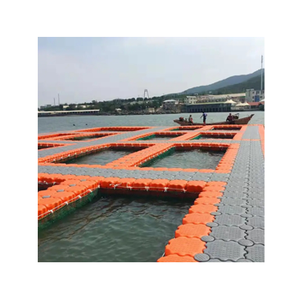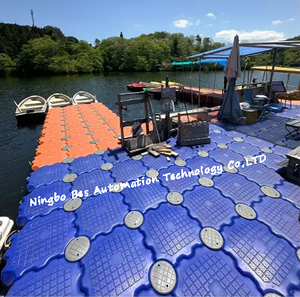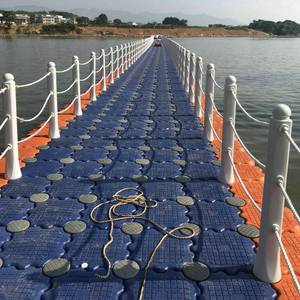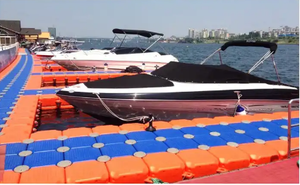
All categories
Featured selections
Trade Assurance
Buyer Central
Help Center
Get the app
Become a supplier

(952 products available)












































Aquarium floating stones are fascinating decorations that can be added to fish tanks and aquariums. They come in several different types, each with its own special looks and benefits:
Materials:
Some aquarium floating stones are made with materials like polystyrene and concrete. Polystyrene is a lightweight plastic material that can float on water. Concrete provides a solid and stable base for the stones.
Shapes and Sizes:
Floating stones come in different shapes and sizes to suit various aquarium designs. Some stones look like natural rocks, with rough surfaces and irregular shapes. Others have smoother surfaces and rounded shapes. This variety allows aquarium owners to choose stones that best fit their aquatic environments.
Texture and Color:
The texture of floating stones can vary, with some having a rough and rocky feel, while others are smooth and polished. The color options also differ, ranging from earthy browns and grays to vibrant greens and blues. These visual features make the stones look more appealing in the aquarium.
Holes and Cavities:
A good design of floating stones for aquariums includes holes and cavities. These openings provide hiding places for fish and other aquatic creatures. It also allows water to flow through the stone, keeping the aquarium environment healthy.
Stability:
Even though these stones float on water, they are stable and balanced. The materials used are heavy enough to keep the stone in one position without tipping over or moving around too much. This stability ensures that the floating stone remains in place and does not disturb the aquarium.
Eco-Friendly Options:
Some floating stones are made with eco-friendly materials. Manufacturers design stones to be safe for the environment and the fish. For example, some floating stones are made with recycled materials. Others use natural stone that does not harm the water or the animals.
Natural Habitat Simulation:
For aquarists aiming to create a biotope aquarium, floating rocks can help simulate the natural habitat of certain species. For example, an African Rift Lake cichlid tank might use floating stones that look like the limestone structures in the lakes. The stones provide a more comfortable environment for the fish and can reduce stress levels.
Creating a Focal Point:
Floating aquarium rocks make an eye-catching focal point. Placing them under a piece of driftwood or a lush plant cluster can highlight their unique shapes and colors. The visual interest they add makes them great for any freshwater or saltwater tank.
Innovative Aquascaping Techniques:
These stones allow for new aquascaping methods. Designers can use them to make structures like floating islands, rock arches, or secluded fish caves. The stones also allow for more vertical space usage, letting keepers stack rocks without the risk of toppling.
Providing Shelter and Spawning Sites:
The floating rocks give fish shelter and places to spawn. Many species prefer to lay eggs in cavities or on surfaces protected by structures. The spaces formed by the rocks can thus increase breeding success rates in aquariums.
Reducing Aggression:
In community tanks, floating rock formations distribute territory and reduce stress. Aggression is common when fish feel their space is invaded. More hiding spots provided by stones make shy fish less visible and lessen aggression levels.
Easy Maintenance:
These stones simplify aquarium maintenance. The floating design prevents substrate disturbance during cleaning. Algae growth is also less likely on floating rocks than on bottom substrate. This makes them easier to keep clean and reduces the time spent on tank upkeep.
When choosing floating stones for an aquarium, there are several key factors to consider to ensure the health of the aquatic environment. Firstly, it's important to select floating stones made from fish-safe materials. Natural stones like pumice or basalt are good options as they won't harm the water quality or the fish. Additionally, artificial stones should be non-toxic and designed specifically for aquarium use.
The size and weight of the floating stones should also be considered. They must be light enough to float on water while providing stability to prevent them from tipping over. Moreover, the stones should have a rough surface that allows plants and animals to attach or walk on them. This helps create a more natural habitat for all the creatures in the aquarium.
Furthermore, the aesthetic and functionality of the floating stones should be considered. They should complement the overall look of the aquarium while providing useful features such as creating hiding places for fish or raising the water level in certain areas. Lastly, the cost of the floating stones should be taken into account. Prices may vary depending on factors such as size, material, and design. It is advisable to compare different options and choose the one that offers the best value for money without compromising quality.
Q1: Can aquarium floating stones be used in marine tanks?
A1: Floating stones can be used in marine aquariums, but they should not affect the water salinity levels or the marine life.
Q2: How can one prevent the accumulation of algae on the floating stones?
A2: Algae can be controlled by maintaining proper water parameters, limiting lighting duration, and using algae eaters in the aquarium.
Q3: Can fish swim through the gaps in the floating stones?
A3: Yes, many floating stones are designed with gaps and openings to allow fish to swim around and explore.
Q4: Are aquarium floating stones suitable for all types of fish?
A4: Floating stones are generally safe for all types of fish, but it's important to consider the size and behavior of the fish to ensure there are no compatibility issues.
Q5: How can one secure a floating stone in place?
A5: Floating stones can be secured using aquarium-safe adhesives or by placing them strategically so that they don't drift or move around.